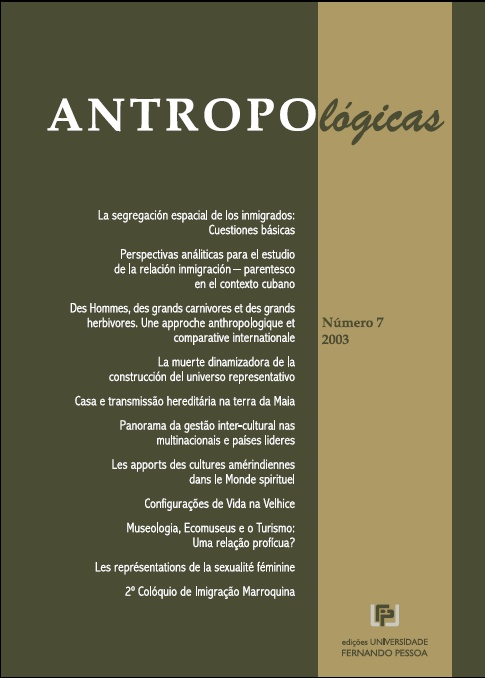Des Hommes, des grands carnivores et des grands herbivores. Une approche anthropologique et comparative internationale.
Abstract
Primary producers, primary consumers, secondary consumers, large carnivores, decomposers and human groups normallyconstitute the functional structure of the continental ecosystems. This is the structure of a state of total
biodiversity. However, at present, the majority of the planet’s ecosystems are de-structured, as many of them were
considerably destroyed and therefore their biodiversity is low or minimal. This was caused by human activities of
historically dominant agrarian or techno-industrial societies. Such humanised ecosystems and such societies are not
sustainable in the long term. The analysis of humanised ecosystems, as well as the analysis of technical and
socio-cultural structures for the integration of different societies with the environment enables the creation of
strategies for restoring and for sustaining ecosystems. This paper presents two cases in which human societies andhigh or total biodiversity coexist: the region of the Sariska Tigers Reserve (India) and the Natural Park of
Montesinho (Portugal).
Downloads
Issue
Section
Feature articles
License
Copyright Notice
Authors who publish in this journal comply to the following terms:
- Authors retain copyright and grant the magazine right of first publication, with the work simultaneously licensed under a Creative Commons Attribution license that allows the sharing of work and recognition of authorship and first publication in this journal.
- Authors are authorized to take additional contracts separately for non-exclusive distribution of the work published in this journal version (ex.: publish in an institutional repository or as a chapter of a book), with recognition of authorship and first publication in this journal.
- Authors are allowed and encouraged to publish and distribute their work online (e.g., in institutional repositories or on their personal page) at any point before or during the editorial process, as it can generate fruitful changes, as well as increase the impact and citation of the published work (see The effect of open access). [link to http: opcit.eprints.orgoacitation-biblio.html]


